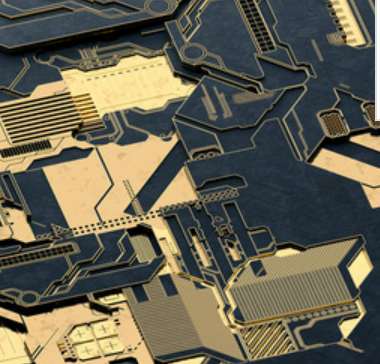
One, RF radio frequency circuit PCB design common problems
Radio frequency (RF) PCB design, which has many uncertainties in the current published theory, is often described as a "black art". Under normal circumstances, for the circuit below the microwave frequency band (including low frequency and low frequency digital circuit), careful planning under the premise of a comprehensive grasp of various PCB design principles is the guarantee of one-time successful design. For PC digital circuits above microwave frequency and high frequency, 2-3 versions of PCB are needed to ensure the quality of the circuit. For RF circuits above microwave frequency band, more versions of PCB design are often needed and constantly improved, and under the premise of considerable experience. This shows the difficulties in RF electrical design.

1. Interference between digital circuit module and analog circuit module
If the analog (RF) and digital circuits work separately, they may work well separately. But once you put them on the same circuit board and use the same power supply together, the whole system is likely to be unstable. This is mainly because the digital signal frequently oscillates between Earth and the positive power source (" 3 V "), and the period is particularly short, often in nanoseconds. Due to the large amplitude and short switching time, these digital signals contain a large number of high frequency components independent of switching frequency. In the analog part, the signal from the wireless tuning loop to the receiving part of the wireless device is generally less than 1μV. So the difference between a digital signal and an RF signal is up to 120dB. Obviously, if the digital signal is not well separated from the RF signal, the weak RF signal can be damaged, so that the wireless device performance will deteriorate or even not work at all.
2. Noise interference of power supply
Rf circuits are quite sensitive to power supply noise, especially to burr voltages and other high frequency harmonics. Microcontrollers will suddenly draw most of the current for a short period of time during each internal clock cycle, because modern microcontrollers are manufactured using the CMOS process. So, assuming a microcontroller operates at an internal clock frequency of 1MHz, it will extract current from the power supply at that frequency. If proper power decoupling is not taken, it will cause voltage burr on the power line. If these voltage burrs reach the power supply pin in the RF part of the circuit, it may cause a failure of operation in severe cases.
3. Unreasonable ground wire
If the ground of RF circuit is not handled properly, it may produce some strange phenomena. For digital circuit PCB designs, most digital circuit functions perform well even without a ground layer. In the RF band, even a short ground wire acts like an inductor. Roughly, the inductance per millimeter length is about 1nH, and the inductive reactance of a 10mmPCB line at 433MHz is about 27Ω. If the ground layer is not used, most ground wires will be longer and the circuit will not have the designed characteristics.
4. Radiation interference of antenna on other analog circuits
In PCB circuit design, there are usually other analog circuits on the board. For example, many circuits have an analog/digital conversion (ADC) or digital/analog converter (DAC). The high-frequency signal from the antenna of the RF transmitter may reach the analog input of the ADC. Because any circuit may act as an antenna to send or receive RF signals. If the ADC input is not properly processed, the RF signal may self-excite in the ESD diode of the ADC input, causing ADC deviation.
Two, RF RF circuit PCB design principles and schemes
1. RF layout concept
When designing RF layout, the following general principles must be met as a priority:
(1) As far as possible, the high power RF amplifier (HPA) and low noise amplifier (LNA) isolation, simply to keep the high power RF transmitting circuit away from the low power RF receiving circuit;
(2) Ensure that there is at least a whole land in the high power area of the PCB board, preferably without holes. Of course, the larger the copper foil area, the better;
(3) Circuit and power decoupling is also extremely important;
(4) RF output usually needs to be far away from RF input;
(5) Sensitive analog signals should be as far away from high-speed digital signals and RF signals as possible.









